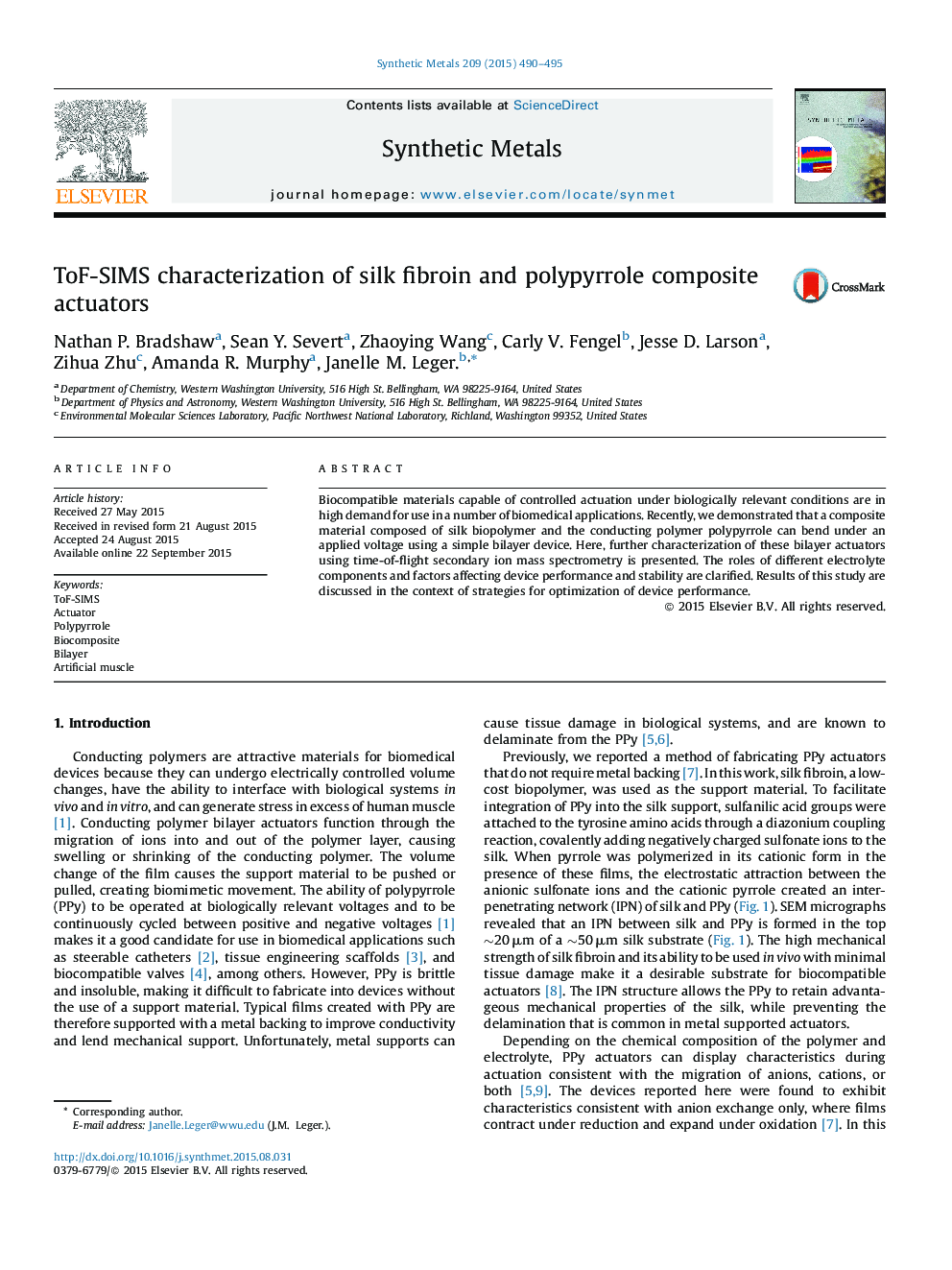| Article ID | Journal | Published Year | Pages | File Type |
|---|---|---|---|---|
| 1440534 | Synthetic Metals | 2015 | 6 Pages |
•We characterize polypyrrole/silk biocomposite actuators using time-offlight secondary ion mass spectrometry.•The composition of the biocomposite film and the profiles of various electrolyte components were studied as a function of the actuation history of the device, depth from the film surface and proximity to the contact electrode.•Results explain various aspects of device performance and degradation, and suggest methods for improvement of device performance.
Biocompatible materials capable of controlled actuation under biologically relevant conditions are in high demand for use in a number of biomedical applications. Recently, we demonstrated that a composite material composed of silk biopolymer and the conducting polymer polypyrrole can bend under an applied voltage using a simple bilayer device. Here, further characterization of these bilayer actuators using time-of-flight secondary ion mass spectrometry is presented. The roles of different electrolyte components and factors affecting device performance and stability are clarified. Results of this study are discussed in the context of strategies for optimization of device performance.
